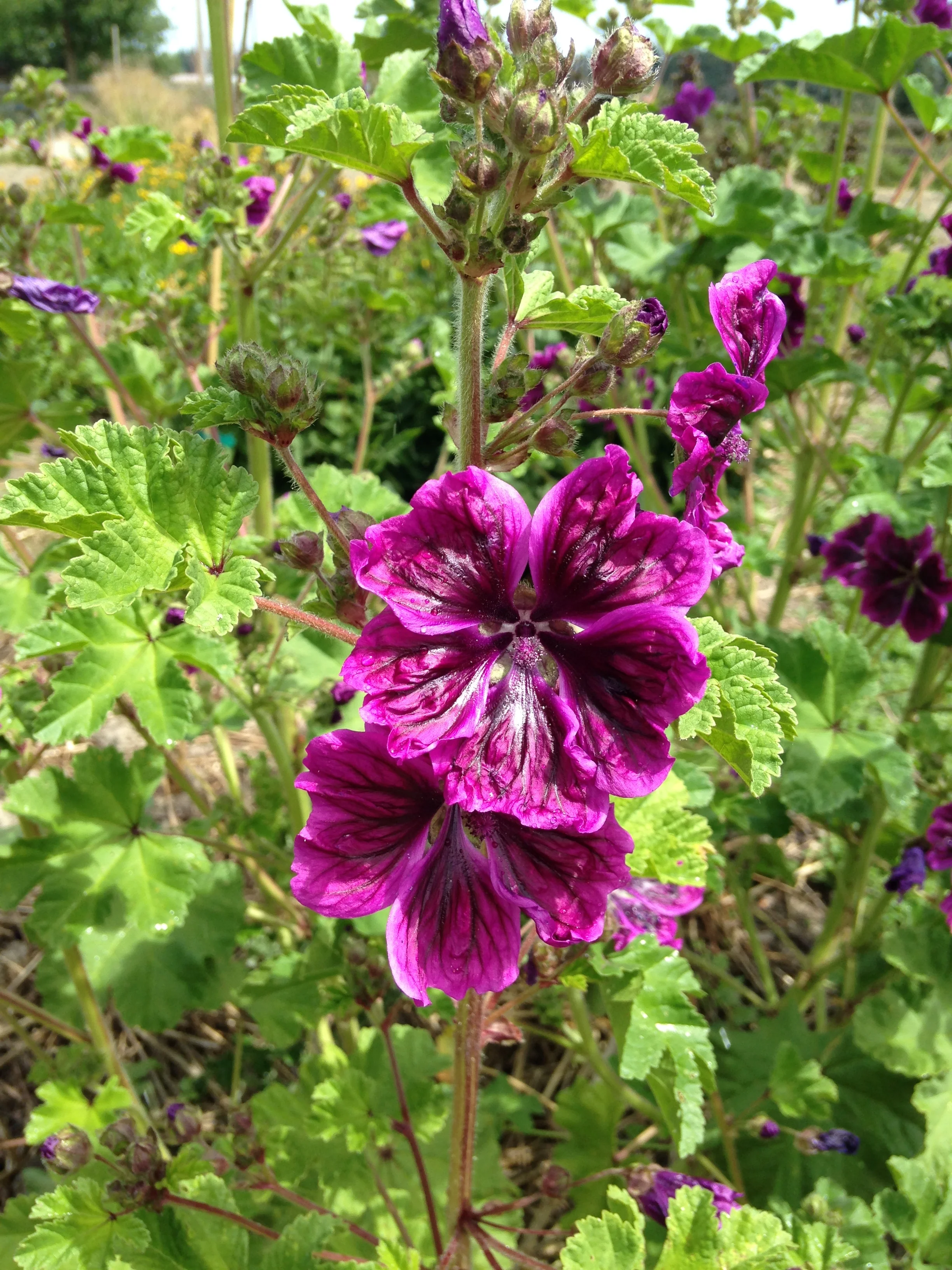Common Names
High Mallow, French Hollyhock
Botanical Name
Malva syvestris
Plant Family
Malvaceae (Mallow Family)
Native Range
Europe
Life Cycle
Perennial
Hardiness Zone
4-9
Habit
High Mallow is a showy perennial reaching up to 4 feet in height, and blooms prolifically from mid-May through until July. It puts on quite a show around mid-June the garden with its delicate velvety flowers. The deep magenta coloured flower petals are streaked with dark purple veining and have a crinkled, slightly shiny, very silky appearance that is sumptuous looking. Like a royal queen in the garden, High Mallow has many of us adoring its graceful beauty.
Sun/Soil
Mallow plants enjoy moist fertile soil and a sunny spot.
Germination/Sowing
Seeds germinate easily and can be direct sown in fall or spring, or started in flats in the spring and then transplanted.
Growing/Care
Plants can be cut back in fall time. High Mallow is not a fussy plant to grow, and will tolerate all sorts of conditions.
Harvesting
The leaves and flowers are harvested for use in the summer, the roots are dug in the fall.
Culinary Uses
The entire plant is edible. A useful food plant, the young leaves were very popular cooked as a vegetable in 19th century Europe.
Medicinal Uses
High Mallow has a long history of use in European folk medicine for its soothing mucilage content. The leaves, seeds, and roots can be harvested and used for their demulcent and emollient properties. A cold infusion is especially nice to soothe sore throats and dry coughs.
A poultice of the fresh leaves or roots can be applied to soothe skin irritations such as rashes, chapped skin, eczema, or contact dermatitis. Similar in medicinal properties to Marshmallow (Althea officinalis) but considered milder, High Mallow is also useful in digestive disorders such as heartburn, indigestion, colitis, and stomach ulcers.
The flowers, though less medicinally potent than other plant parts, look very lovely in tea blends and lend their gorgeous deep magenta colour to your herbal infusions.
This species of Mallow has also been used to produce natural yellow, cream, and green dyes.
Like other Mallow Family members, High Mallow is a valuable species that provides both pollen and nectar to our precious bees.
Themes
Apothecary Garden, Low Maintenance, Deer Resistant, Attracts Pollinators, Cut Flowers.




